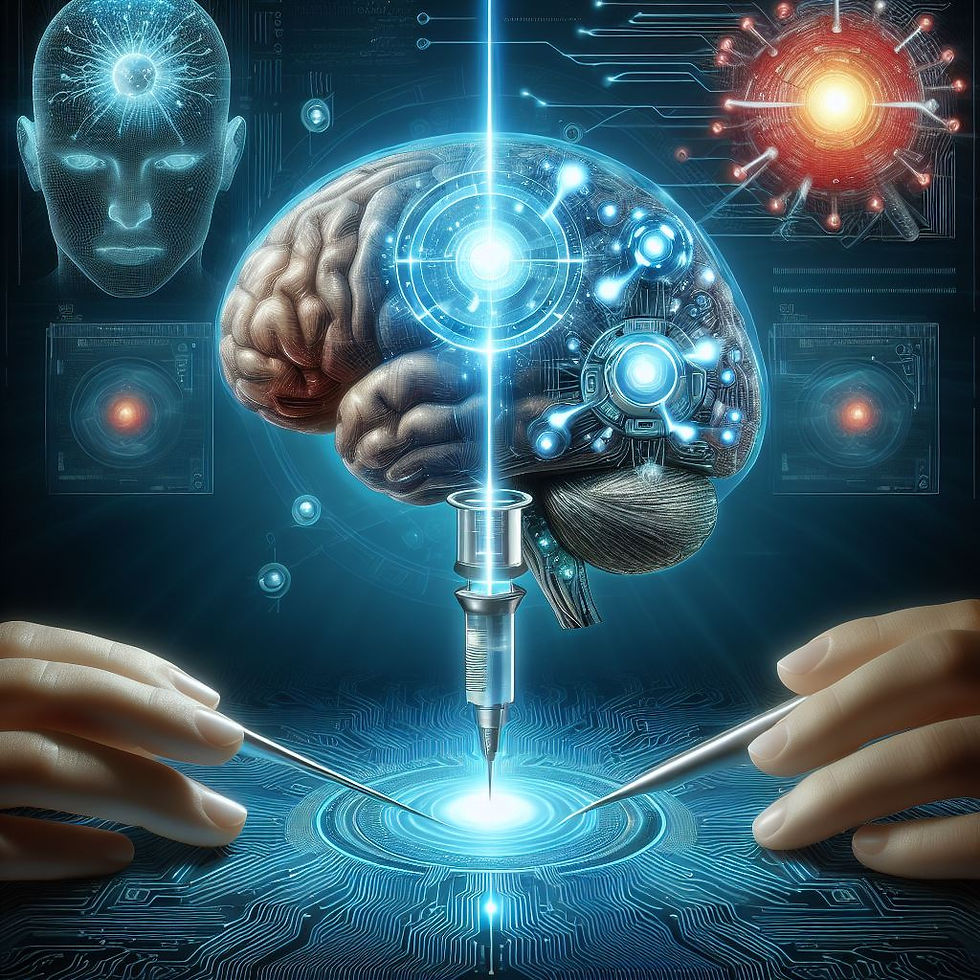Unlocking the Mind's Mysteries: A Leap into the Future with Human Brain-Mimicking Supercomputers
- MedAchievers Parliament
- Jan 17, 2024
- 4 min read

The Marvel of Brain-Mimicking Supercomputers
Imagine a world where computers not only compute but also simulate the intricate workings of the human brain. These brain-mimicking supercomputers, inspired by the complexity of neural networks, embody our quest to understand and replicate the enigmatic capabilities of the mind.
Understanding Brain-Mimicking Supercomputers
At the core of this revolutionary technology lies the emulation of neural networks, mirroring the brain's architecture and functioning. These supercomputers integrate advanced algorithms, neural models, and massive computational power to process information akin to the human brain. They possess the capability to analyze complex data patterns, generate creative solutions, and even mimic human-like intelligence.
Processing Information and Generating Solutions
One of the most intriguing aspects of these systems is their ability to process information and generate creative solutions. Brain-mimicking supercomputers can recognize patterns, make associations, and create novel solutions to complex problems through neural networks and deep learning algorithms. They adapt by continuously learning from new data, refining their algorithms, and innovating based on their experiences.
Utility and Availability in India and Australia
India:
In India, the development and adoption of brain-mimicking supercomputers are gaining traction, primarily in research institutions and technology hubs. Premier institutions like the Indian Institutes of Technology (IITs) and Science Education and Research (IISERs) actively research artificial intelligence, neural networks, and computational neuroscience.
However, the availability of these supercomputers might still be relatively limited in India's broader landscape due to challenges in infrastructure, funding, and specialized expertise required for their development and maintenance. Yet, collaborations between academia, government, and private sectors aim to bridge this gap.
The utility of brain-mimicking supercomputers in India spans diverse sectors, from healthcare and pharmaceuticals to agriculture and finance. Applications include drug discovery, disease diagnosis, personalized medicine, weather prediction, financial modeling, and more. Efforts to make these supercomputers more accessible and applicable to India's unique challenges are underway, aiming to leverage their power for societal and economic growth.
Australia:
With its robust research ecosystem and technological advancements, Australia stands at the forefront of adopting and utilizing brain-mimicking supercomputers. Institutions such as the Commonwealth Scientific and Industrial Research Organisation (CSIRO) and leading universities like the University of Melbourne and the Australian National University have been actively involved in research and development in this field.
Availability-wise, Australia boasts access to advanced computing facilities and a solid commitment to fostering innovation, enabling a relatively higher accessibility to brain-mimicking supercomputers than some other countries—government initiatives and collaborations between academia and industry support deploying and utilizing these systems across various sectors.
The utility of brain-mimicking supercomputers in Australia extends to fields like healthcare, climate modeling, astronomy, advanced materials research, and more. In healthcare, these systems aid in personalized medicine, medical imaging analysis, and predictive analytics, improving patient outcomes and healthcare efficiency.
Success Rates and Areas of Application in Healthcare
Brain-mimicking supercomputers are revolutionizing healthcare with their remarkable success rates across various applications. Did you know they've shown a 20-30% increase in diagnostic accuracy compared to traditional methods, especially in radiology and genomics? These systems have expedited drug discovery, reducing time and costs while significantly improving success rates in identifying potential drug candidates.
Their ability to personalize treatment plans by analyzing individual patient data has resulted in higher precision interventions, enhancing treatment outcomes and patient satisfaction. Also, these supercomputers possess predictive capabilities, enabling more accurate prognoses and empowering clinicians to make informed decisions and proactively manage patient health.
Continual advancements in computational neuroscience and data analytics promise even higher success rates in healthcare applications. This hints at transformative shifts in disease management and personalized medicine globally. Amazing, right?
How Supercomputers Reshaping AI
Imagine supercomputers that don't just think like machines but mimic the complexities of the human brain's neural networks, revolutionizing how AI evolves. These brain-inspired systems aren't just a leap but a cosmic jump in AI technology!
First, they're boosting the learning power of AI by replicating how our brains adapt and learn from experiences. That means more intelligent AI that doesn't just follow instructions but evolves and improves over time. Then, they're cracking the code on complex problems. Imagine an AI that's not just smart but capable of handling mind-boggling complexities, sifting through colossal data sets, spotting patterns, and solving problems that would make conventional systems sweat.
But wait, there's more! These brain-mimicking supercomputers are unleashing AI's creative side. They're teaching AI models to think outside the box, make connections, and develop genius solutions independently. It's like AI is becoming an artist, creating without a rulebook. And the impact? It's everywhere! From supercharging language processing and computer vision to making robots more intelligent and powering self-driving tech, these brainy machines are the secret sauce, making AI applications way more efficient and accurate.
But hey, as AI gets closer to mimicking human smarts, it raises significant questions. Ethical stuff, like fairness, privacy, and responsible AI use in society. These supercomputers are pushing us to think about the ethics of AI in a whole new way.
In short, these brain-mimicking supercomputers aren't just transforming AI; they're rewriting the playbook, sparking a new era where AI isn't just intelligent—it's getting human-like in its intelligence.
Conclusion
We're on the brink of an incredible technological leap, and human brain-mimicking supercomputers are the trailblazers. They're pushing boundaries and blurring the lines between human intelligence and machine capabilities. What we've seen so far in neuroscience, AI, and healthcare is merely the opening act. But here's the thing: for these advancements to truly shine and benefit us all, we've got to embrace and wield this technology ethically and responsibly. That's how we'll unlock a world of unimaginable discoveries that could redefine the very essence of humanity.
.jpg)



Comments